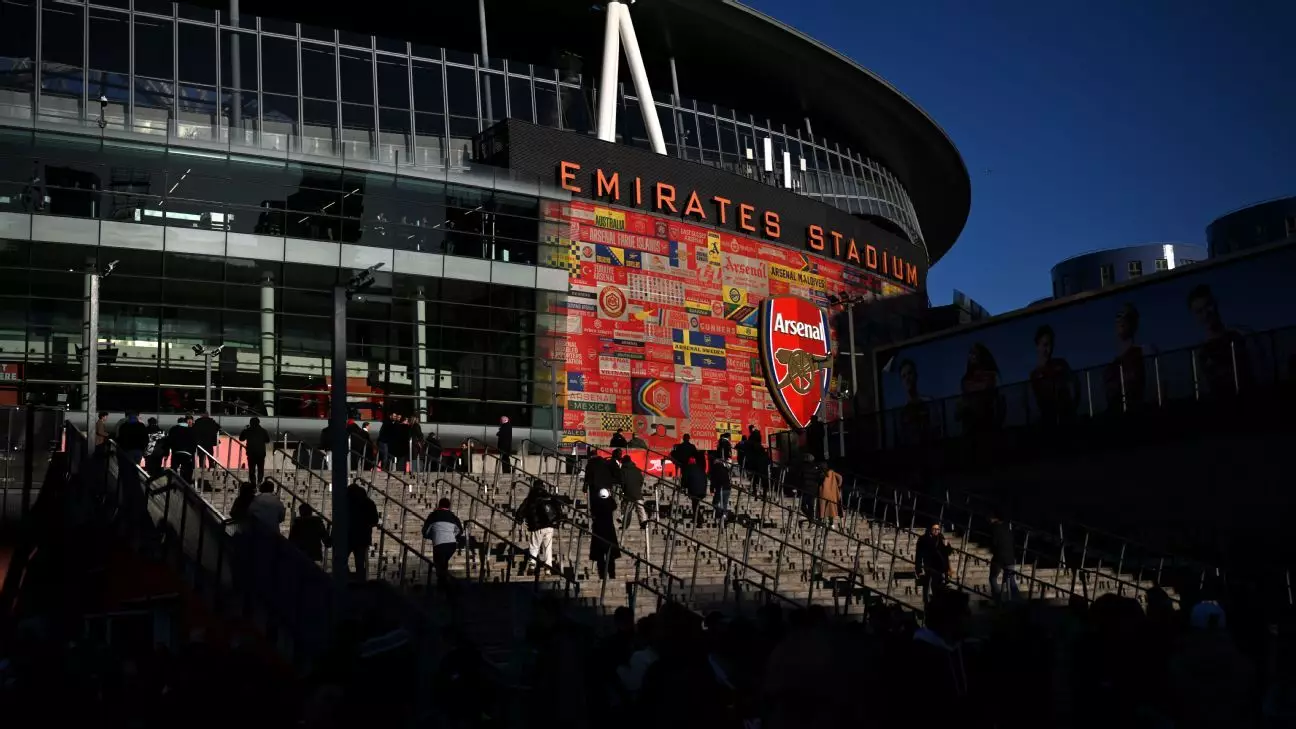In a recent announcement, Arsenal Football Club revealed a significant loss of £17.7 million ($22.3 million) for the financial year ending May 31, 2024. Despite this setback, the club achieved a record revenue of £616.6 million, which marked a dramatic rise from the previous year’s £466.7 million. This juxtaposition of record earnings alongside a financial deficit paints a complex picture of the club’s operational and strategic dynamics. The considerable income can be attributed to various factors, including enhanced matchday revenues and commercial activities, particularly following Arsenal’s re-entry into the UEFA Champions League after a six-year absence.
Crucially, player trading contributed a hefty £52.4 million to the club’s earnings. The management’s strategy in the transfer market is deeply intertwined with Arsenal’s financial health. High-profile signings such as Declan Rice, Kai Havertz, and Jurriën Timber underscored the club’s ambition to bolster its squad despite the looming financial challenges. Yet, player trading profits have not been enough to offset the rising wage bill, which increased from £234.8 million to £327.8 million. This disparity raises questions about sustainability, particularly considering the financial pressures imposed by UEFA’s Financial Fair Play (FFP) regulations and the Premier League’s Profit and Sustainability Rules (PSR).
Arsenal’s return to the Champions League culminated in a commendable quarterfinal appearance, where they narrowly lost to Bayern Munich, highlighting their competitive resurgence. The commendable performance not only excited fans but also likely attracted more lucrative sponsorship and broadcast deals, further contributing to the club’s financial fabric. Meanwhile, the women’s team has also made strides, setting a women’s Super League attendance record at the Emirates and showcasing the growing popularity of women’s football.
Despite impressive revenue figures, Arsenal’s board faced heavy criticism over their transfer strategy. The decision not to sign a striker during the summer and January transfer windows raised eyebrows when, according to the latest accounts, the club’s net spend was only around £13 million. There were significant sales as well, including Folarin Balogun’s move to Monaco and Granit Xhaka’s transfer to Bayer Leverkusen, which further complicated the narrative of a club striving to enhance on-field performance while maintaining financial prudence.
The rejection of a £40 million bid for Ollie Watkins and the decision to part ways with academy products like Emile Smith Rowe and Eddie Nketiah were indicative of a calculated but defensible approach under the PSR framework. However, the balancing act of maintaining competitive quality while adhering to financial constraints remains an ongoing challenge that Arsenal must navigate.
As Arsenal contemplates its future, the key will be how effectively the club can blend ambition with fiscal responsibility. The current financial landscape suggests an urgent need for a strategic realignment that prioritizes both competitiveness and sustainable growth. While Arsenal has demonstrated the capacity to generate substantial revenues, the challenge lies in converting that potential into net profitability while making shrewd decisions in both the transfer market and squad development moving forward.

